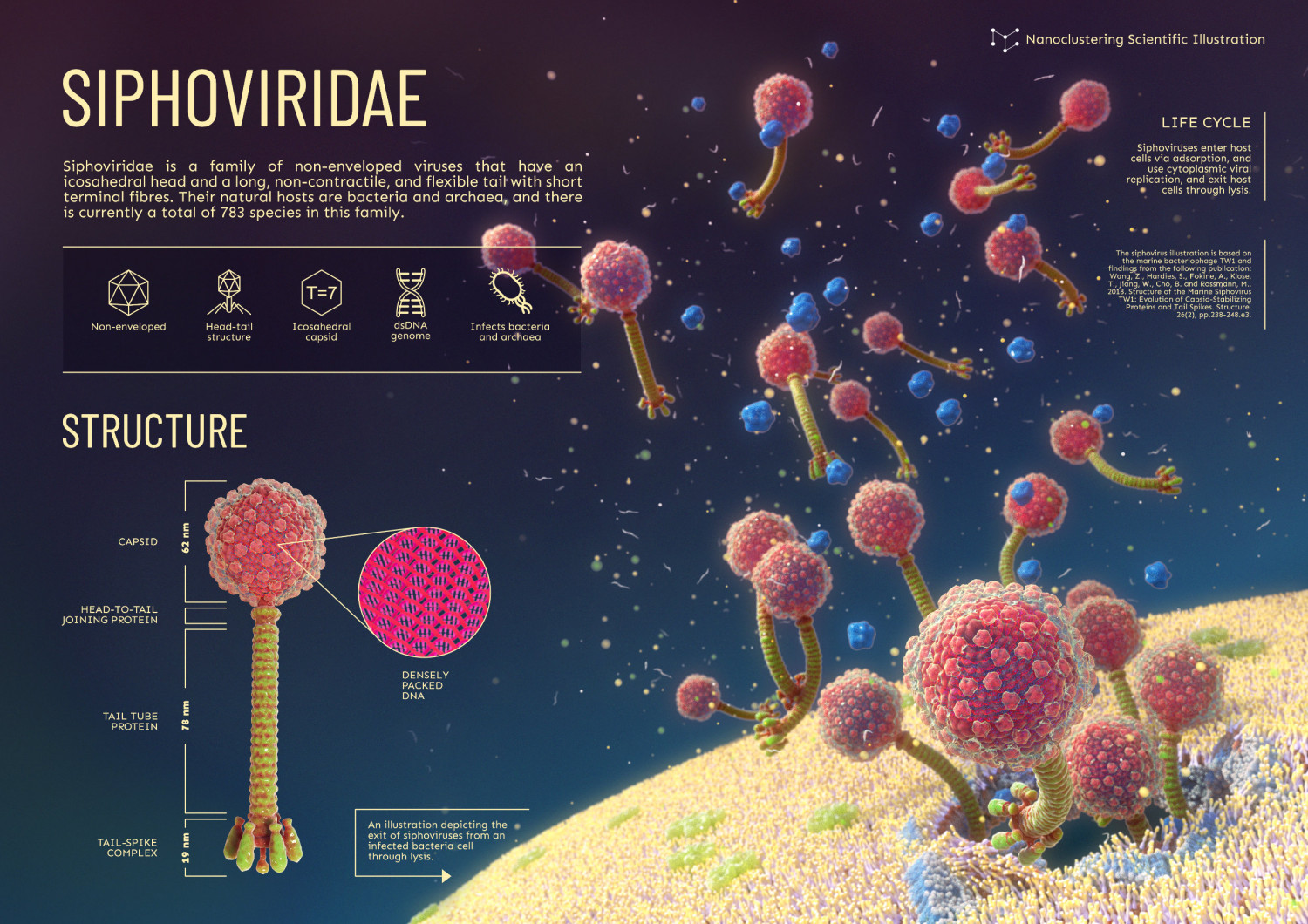
The bacteriophage Siphovirus
Nanoclustering Scientific Illustration SIPHOVIRIDAE LIFE CYCLE Siphoviridae is a family of non-enveloped viruses that haye' an icosahedral head and a long, non-contractile, and flexible tait with short terminal fibres. Their natural hosts are bacteria and archaea, and there is currently a total of 783 species in this family. Siphoviruses enter host cells via adsorption, and use cytoplasmic viral replication, and exit host cells through lysis. The siphovirus illustration is based on the marine bacteriophage TW1 and findings from the following publication: Wang, Z., Hardies, S., Fokine, A., Klose, T., Jiang, W., Cho, B. and Rossmann, M., 2018. Structure of the Marine Siphovirus TW1: Evolution of Capsid-Stabilizing Proteins and Tail Spikes. Structure, 26(2), pp.238-248.e3. T=7 Non-enveloped dsDNA Infects bacteria and archaea Head-tail Icosahedral structure capsid genome STRUCTURE CAPSID HEAD-TO-TAIL JOINING PROTEIN DENSELY PACKED DNA TAIL TUBE PROTEIN An illustration depicting the exit of siphoviruses from an infected bacteria cell through lysis. TAIL-SPIKE COMPLEX 78 nm 19 nm wu z9
The bacteriophage Siphovirus
Source
Unknown. Add a sourceCategory
ScienceGet a Quote







